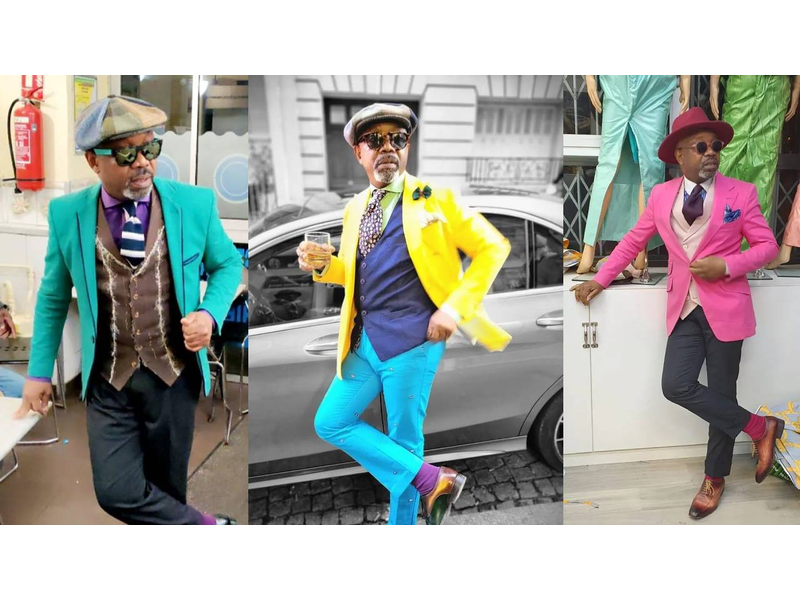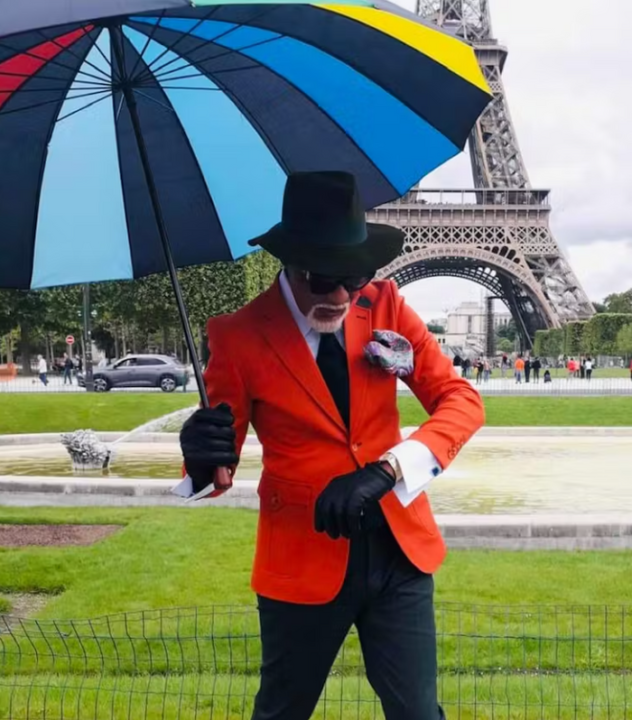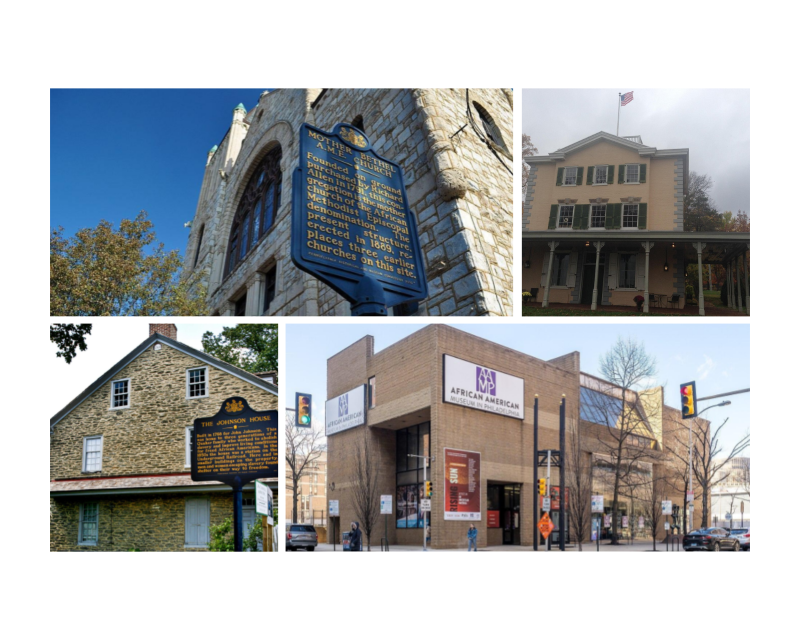
Jocelyn Armel, aka the Bachelor, is one of the most talked-about ‘Sapeurs’ in the media. Image: Instagram | @jalebachelor
You can spot them in the streets of Paris or at fashion events in London, Milan, Brussels, or Dubai. Most are Black African men with sharp outfits designed and chosen to get them noticed. Known as “Sapeurs” – the name comes from the Society for Ambience and Elegance (Sape) and from French slang “se saper”, “to dress up” – these figures stand out with their offbeat and baroque sartorial style.
Research by ethnologists and historians indicates that the movement was born in Central Africa, likely at the port of Bacongo, the river that separates the two Congos, the Democratic Republic of the Congo (Congo Republic, North of the river) and the Democratic Republic of the Congo (DR Congo, Southside). The subculture got its start around 1919-1920, and by the 1950s, it gained momentum and took off. The first Congolese emigrants (including former infantrymen in Europe) returned home, bringing with them products perceived as luxurious or ceremonial – branded objects, accessories, clothes, and shoes.
It was at this point that the first parades and competitions began in the neighborhoods of the two Congos capitals, Brazzaville and Kinshasa. Based on the same principle as dance battles, Sapeurs show off, demonstrate, and prove their skills and abilities – the gestures and voice, the walk, and the look. More than just dazzling clothes, verbal and visual communication is essential to stand out. So throughout the two cities, crowds formed to watch the jousting and acclaim these “Black aesthetes” – living works of art that were better dressed than the colonial authorities themselves.
In the 1970s, Congolese families began to send their children to France to study, and many brought their stylish clothes with them. In Europe, the Sape movement got a new lease of life through young people like singer and composer Aurlus Mabele, the jeweler Djo Balard, Paris pioneer, Ricley Loubaky, or fashion designer, Jocelyn Armel, alias “The Bachelor”, Ben Moukacha, and musician Papa Wemba, also known as the “King of Rumba Rock”.
From 1984 to 1985, the movement became more established in France, and Paris’s Maison des Étudiants de Congolais (Congolese Students House) became the cradle of Sape. Located in the city’s Third Arrondissement, the MEC was the center of activity for the students who lived there as well as businessmen from Brazzaville and Kinshasa. Pioneers such as Djo Balard, Ben Moukacha, Jocelyn Armel, and Nono Ngando (all of whom we met during this research) all pointed to the MEC as the official starting point for authentic Sape. Balard explains:
“The MEC is the Mecca of the Sapeurs. Pretty much everything started there. It was a party all the time, with competitive moments but in good spirits and the Cape. You could see the silhouettes all dressed up. The colors and brands were all singing. It was a sight to behold. At the MEC, the rule was to be well dressed, to shout it, enjoy it, and even swear by it.”
Almost everywhere in Africa and major European capitals, people were talking about this new group of elegant and passionate Africans who frequented the best fashion boutiques. In just a few years, the Sape movement reached the world and was the talk of Europe, particularly France. Parisian Sapeurs continued to create a buzz to democratize their movement. In the mid-1980s, French director Thomas Gilou madeBlack Mic Macwhich was the first “mainstream” cultural nod to the movement.

Chardel Matsanga, one of the emblematic figures of the ‘Sapeur’ movement. Instagram | @chardelmatsanga
In 2010, stylist and designer Paul Smith launched a Sape collection, paying tribute to the colorful and quirky style of African Sapeurs. During a 2011 visit to Paris, the English photographer Martin Parr visited the Sapeurs and presented a photo exhibition in the Goutte d’Or district that was widely covered by the media. In 2016, designer Christian Louboutin launched a collection of men’s shoes inspired by the kitendi model – a reference to the Sape movement in Lingala, a language spoken in much of Central Africa.
Of course, clothing can go far beyond individual or collective expressiveness to enter the religious, symbolic, or political arena. The aim of my research – which falls within the field of postcolonial studies and subaltern studies (the study of people, minorities, or groups ignored, under-recognized, or dominated by race, class, gender, sexual orientation, ethnicity or religion) – is to explore the meaning and impact of the demonstrative consumption of luxury clothing by Black Sapeurs.
Sapeurs are not typical customers of luxury goods. Instead, they are in search of social recognition and actively make brands their own. With its varying degrees of appreciation, luxury is used as a reference point for the group to which they belong.
The movement’s distinctive style is based on a highly codified use of accouterments, colors, and patterns, creating an original outfit beyond the classic Western model. There’s an excess of accessories: shoes, scarves, belts, watches, glasses, hats, cosmetics, and perfumes. This profusion exists to underline Sapeurs message: it’s all about “hitting hard” – in other words, making a strong impression in a competitive context. Personal creativity, a touch of humor, and subtle provocation are all underlined.
The Sapeur seeks to signal his presence to others and be noticed through the wealth of colors and accessories, transforming himself into an actor in the social theater. With his unique attire, he seized the right to please himself and also to be visible, to exist, and to please.
Clothing fulfills several functions: practical, utilitarian, institutional, symbolic, and aesthetic. For the Sapeurs, it allows them to make a political statement – one that pleads for dignity. Sape is the polar opposite of the humiliation associated with poverty and customers who may be perceived as not having the right to step into a luxury clothing shop.
The colonial past also plays a role in this need for reparation and justice. In African history, the khaki uniform and the colonial helmet long represented the political and military power of the Whites. With the Sape movement, the image of power is reversed and the dazzling suit, the hat, the cigar, and the cane make it possible to symbolically overcome the humiliation of colonial domination – while at the same time reminding us that it happened.
Finally, there’s a very important term in the world of the Sapeurs, and that’s ambiance. They put on a show and seek crowds and thus encourage sociability. The colorful and luxurious clothes, the flow of words (like a kind of trance), the music and movements and the electric atmosphere provoke collective admiration. This inspires peers’ admiration and so validates Sapeurs status.





